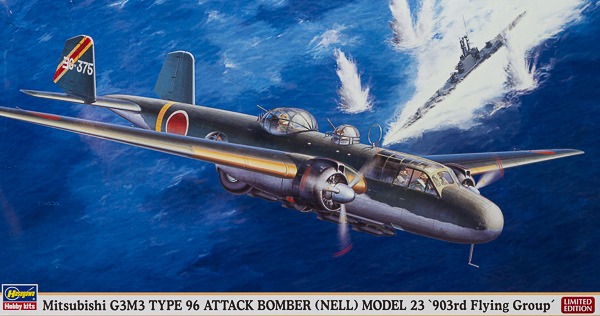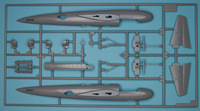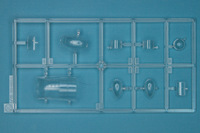
Hasegawa 1/72 Mitsubishi G3M3 Type 96 Attack Bomber (Nell) Model 23 '903rd Flying Group'
By Chris Banyai-Riepl
Overview
The Mitsubishi G3M came about from a specification for a long-range heavy bomber. Aimed to be capable of handling operations in China and Southeast Asia. First flying in 1935, the G3M entered combat during the Second Sino-Japanese War in 1937. By the time the Japanese attacked Pearl Harbor in 1941 and pulled the United States into the war, the G3M was outdated, but still soldiered on, taking part in the attack on the British battleships HMS Prince of Wales and Repulse. By 1943, though, the G3M had mostly been relegated to training and transportation roles.
The Kits
First arriving in the late 1990s, the Hasegawa 1/72 G3M kit has seen a few re-releases over the years. It's been about five years since the last release, it's been due for a resurrection, and here it is as the G3M3 Type 96 Attack Bomber, which featured more powerful engines. The model features recessed panel lines and excellent exterior detailing, with a basic yet complete interior. The decal sheet comes with two options from 1945 that are camouflaged green over gray.

|

|
Jumping into the construction, the first step has you building up that interior. The cockpit has a floor with separate control columns and seats, with the instrument panel fitting into the fuselage halves. Moving further back, there are other side details and a couple of bulkheads, and overall these details are rudimentary at best. For the most part, not much will be visible through the fuselage windows, but those who want to have a bit more going on in the cockpit will want to look to aftermarket to fill out those empty spaces.

Once all the innards are done, the fuselage goes together as expected, and attention can turn to the wings. Like the cockpit, the wheel wells are fairly simple, although they do feature a separate insert that has some of the interior structure. The engines have a single-piece main cowling that has a separate upper scoop and separate cowl flaps. The propellers have separate hubs, and the engines themselves have a separate crankcase housing fitting on the plate with the cylinder faces. The fuselage-wing connections are very solid as well, making this one a snug fit.

|

|
The landing gear is another area of solid yet simple pieces. The main struts are molded as single pieces, including the retraction struts. The main wheels are split into right and left pieces and feature flattened bottoms. For other underside details, this kit comes with a torpedo, 60kg bombs, and 250kg bombs. The G3M3 could carry one torpedo or two 250kg bombs or eight 60kg bombs, so the options are wide open for the modeler with this one.
For painting and finishing, the two options are both from 1945 and are camouflaged Nakajima IJN Green over Gray Green. The first option is from the 903rd Naval Flying Group, while the second option is from 901st Naval Flying Group. Both have yellow/red/yellow diagonal tail bands with aircraft codes in white over the top. The decals are nicely printed and should go down without any issue.

Conclusion
This is a great kit of the late version of the G3M, even with the simple interior. The marking options provide a unique scheme for a late war example, an interesting counterpoint to the more common early war schemes. My thanks to Hasegawa USA for the review sample.
